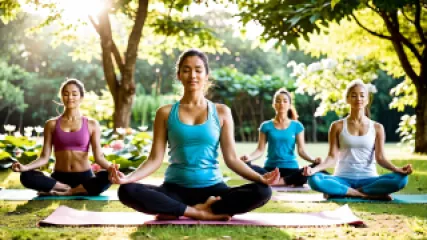Bridging the Mind-Body Divide: A Step-by-Step Guide
Humans have long grappled with the concept of the mind and body as two distinct entities. This dichotomy, often referred to as dualism, has its roots in philosophy, psychology, and neuroscience. However, increasingly, experts in these fields are recognizing the inseparable nature of the mind and body and the critical need to bridge this divide for optimal health and wellbeing. This guide will take you through a step-by-step journey to understand and bridge the mind-body divide.
Understanding the Mind-Body Dichotomy
The first step to bridging the mind-body divide is understanding what it is. The mind-body dichotomy is a philosophical concept that perceives the mind and the body as two fundamentally different entities. The mind is often associated with mental processes such as consciousness, emotions, and thoughts, while the body is linked with physical processes like movement and sensory perception.
- Mind: Often associated with subjective experience, awareness, and consciousness. It's the part of you that thinks, dreams, feels, and perceives.
- Body: The physical aspect that can be seen, touched, and measured. It includes your organs, tissues, cells, and biological processes.
While this distinction might seem logical on the surface, it fails to consider the profound interplay between our mental and physical processes. Our bodies influence our minds just as much as our minds influence our bodies.
Why It's Important to Bridge the Divide
Research has shown a strong correlation between mental states and physical health. For instance, chronic stress can lead to physical symptoms like headaches and high blood pressure. On the other hand, physical conditions like chronic pain can have profound effects on mental health, leading to conditions like depression or anxiety.
By recognizing the interconnected nature of our mind and body, we can harness this relationship to improve both our mental and physical health. This is where the idea of 'bridging the mind-body divide' comes into play.
Steps to Bridge the Mind-Body Divide
Step 1: Cultivate Mindfulness
Mindfulness is the practice of bringing one's attention to the present moment in a non-judgmental way. It involves being aware of your thoughts, feelings, and bodily sensations as they occur. Regular mindfulness practice can help you become more attuned to the signals your body sends you and how your mind responds to those signals.
Step 2: Prioritize Physical Activity
Exercise is not only good for our bodies but also our minds. Physical activity releases endorphins, known as 'feel-good hormones', that can enhance mood and reduce stress. By integrating regular physical activity into your routine, you are taking a step towards synchronizing your mind and body.
Step 3: Balanced Diet
The food we eat directly impacts our physical health and indirectly affects our mental state. A balanced diet rich in fruits, vegetables, lean protein, and whole grains provides the necessary nutrients for optimal brain and body function.
Step 4: Get Adequate Sleep
Sleep plays a vital role in both our physical and mental health. During sleep, our bodies repair cells, clear out toxins, and consolidate memories. Lack of sleep can lead to a host of physical problems and can affect mood, memory, and cognitive function.
Step 5: Seek Professional Help When Needed
If you're struggling with physical symptoms that you believe are linked to your mental health, or vice versa, don't hesitate to seek professional help. Psychologists, psychiatrists, and therapists are trained to help you navigate these complex interrelationships and can provide strategies and treatments to help.
Conclusion
The mind-body dichotomy is an ancient concept, but today, we understand that this divide is artificial. The mind and body are deeply interconnected, and our health depends on recognizing and nurturing this relationship. By cultivating mindfulness, prioritizing physical activity, eating a balanced diet, getting adequate sleep, and seeking professional help when needed, we can bridge the mind-body divide and enhance our overall wellbeing.






